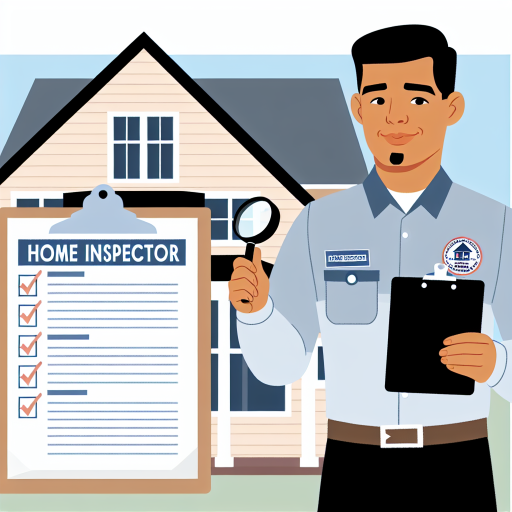Understanding the Difference Between Wants and Needs in Home Buying
Defining Wants and Needs
When choosing a home, it’s important to identify what you want versus what you need.
Needs are essential features that fulfill your basic requirements.
Wants are additional features that improve your lifestyle but aren’t mandatory.
Clarifying these distinctions can lead to better decision-making.
Identifying Your Needs
Start by listing your absolute needs for a new home.
Consider factors such as location, size, and safety.
For instance, a safe neighborhood is a fundamental need for families.
Think about your daily routines and how a home can accommodate them.
These considerations help create a checklist of non-negotiable features.
Evaluating Your Wants
Next, assess the features you desire but can live without.
Wants might include a swimming pool or a gourmet kitchen.
While these enhance comfort, they may not impact your daily life.
List these features and prioritize them according to importance.
This approach aids in managing expectations during your search.
Balancing Wants and Needs
Once you’ve identified wants and needs, it’s time to balance them.
Transform Your Real Estate Decisions
Unlock personalized real estate insights crafted just for you. Get actionable advice designed to amplify your success.
Get StartedUnderstanding your budget is crucial in this process.
Allocate your budget primarily to fulfill your needs first.
Then, consider options for adding some wants if financial feasibility allows.
This strategy prevents overspending while maximizing satisfaction.
Making Compromises
Compromises might become necessary during your home search.
Sometimes, you may find a home that meets most but not all criteria.
Evaluate how much you can sacrifice in terms of wants for your needs.
Open-mindedness can lead to unexpected discoveries in a suitable home.
Ultimately, the goal is to find the best balance for your lifestyle.
Creating a List of Must-Haves
Defining Your Essentials
Begin by identifying your core needs.
Think about what you cannot live without in a home.
Your essentials may include the number of bedrooms or location.
Consider also your lifestyle and future requirements.
Make a list to visualize your priorities clearly.
Showcase Your Real Estate Business
Publish your company profile on our blog for just $200. Gain instant exposure and connect with a dedicated audience of real estate professionals and enthusiasts.
Publish Your ProfileEvaluating Your Wants
Next, assess the features you’d like to have.
Wants often include special amenities like a pool or fireplace.
It’s important to differentiate between wants and needs.
A want enhances your lifestyle, but isn’t essential.
Rank these wants to maintain focus on your goals.
Balancing Wants and Needs
Review your list regularly to ensure balance.
Ask yourself which items can be compromised.
Engage in discussions with your family or partner.
This collaboration often leads to better decision-making.
Keep an open mind as you explore different options.
Adapting to Your Budget
Your budget plays a vital role in your selection process.
Be realistic about what you can afford.
Prioritize must-haves within your financial limits.
Don’t forget to account for ongoing maintenance costs.
Adjust your list based on what’s financially feasible.
Conducting Market Research
Research the current market for properties.
Explore various neighborhoods and their offerings.
Visit open houses to get a feel for different homes.
Take notes on what aligns with your list of essentials.
Utilize online resources to compare housing options.
Identifying Your Wants: Features That Enhance Comfort and Lifestyle
Understanding Your Personal Preferences
Identifying your personal preferences is crucial in the home-buying process.
Start by making a list of features that you desire in your future home.
Consider aspects like architectural style, number of bedrooms, and outdoor space.
Additionally, think about the type of neighborhood that aligns with your lifestyle.
Functional Features That Matter
Functionality plays a significant role in selecting a home.
Prioritize features that enhance daily convenience and comfort.
- Open floor plans promote social interactions.
- A spacious kitchen is ideal for cooking and entertaining.
- Energy-efficient appliances save on utility bills.
Aesthetic Preferences and Personal Touches
Aesthetics are essential when choosing a home that resonates with you.
Consider the interior design and color schemes that appeal to you.
Whether modern, traditional, or eclectic, your aesthetics should reflect your personality.
Assessing Outdoor and Community Features
The outdoor space can greatly enhance your living experience.
Showcase Your Real Estate Business
Publish your company profile on our blog for just $200. Gain instant exposure and connect with a dedicated audience of real estate professionals and enthusiasts.
Publish Your ProfileThink about whether you prefer a garden, patio, or balcony.
Additionally, consider community features like parks and recreational facilities.
Proximity to schools, shopping, and public transport is also important.
Delve into the Subject: Understanding Credit Scores For First-Time Homebuyers In The USA
Setting a Realistic Budget
Understanding Financial Constraints
Before you start house hunting, evaluate your financial situation.
Assess your current income and expenses thoroughly.
Think about your savings and any debts you have.
Your financial picture will inform your home-buying budget.
Consult with a financial advisor if needed for expert guidance.
This assessment will help prevent any financial strain later on.
Determining Your Budget
Typically, a budget consists of several key components.
- Consider your monthly mortgage payment.
- Include property taxes in your calculations.
- Factor in homeowners insurance and maintenance costs.
- Don’t forget about utilities and homeowners association fees.
A realistic budget includes all these ongoing expenses.
Moreover, determine how much you can afford as a down payment.
This upfront cost significantly impacts your mortgage options.
Balancing Desires with Financial Reality
Creating a wish list of features can be exciting.
However, it is crucial to remain realistic about your budget.
List your must-haves versus nice-to-haves in a home.
- Your must-haves may include the number of bedrooms and bathrooms.
- Your wish list may include a swimming pool or large backyard.
Prioritize your needs when comparing potential homes.
This will help streamline your decision-making process.
Making Adjustments as Necessary
Sometimes, your initial budget may need adjustments.
Be open to revising your wish list based on your budget.
For instance, consider homes in different neighborhoods.
This can lead to more affordable options with desired features.
Ultimately, flexibility helps you achieve your home ownership goals.
Delve into the Subject: Home Inspection Checklist For Buying Older Homes In The USA
Prioritizing Wants and Needs
Why It Matters
Balancing your wants and needs is crucial for home buying.
This process ensures you make informed decisions.
Understanding your priorities helps manage your budget wisely.
Identifying Wants vs. Needs
Wants are the features you desire in a home.
Needs are essential for your daily life.
Showcase Your Real Estate Business
Publish your company profile on our blog for just $200. Gain instant exposure and connect with a dedicated audience of real estate professionals and enthusiasts.
Publish Your ProfileBegin by creating two separate lists.
Include items like location and school district as needs.
Consider aesthetic features or extra amenities as wants.
Ranking What Matters Most
Once you have your lists, rank each item from most to least important.
This ranking clarifies your priorities effectively.
Group similar items together for easier comparison.
For example, combine all necessary amenities into one category.
Involving Key Decision-Makers
Include your family or significant others in your decision-making.
Discuss what each person values in a new home.
Different perspectives can highlight overlooked aspects.
Collaboration fosters a sense of joint ownership in the decision.
Creating a Balanced Plan
After ranking your wants and needs, create a balanced plan.
Assess how each possible home meets these criteria.
Be willing to compromise on less important wants when needed.
Remain flexible during your search to adapt to changing situations.
Adjusting as Necessary
Home buying can often involve unexpected challenges.
Be prepared to revisit your lists and rankings regularly.
Adjust your priorities as more information becomes available.
Stay focused on your ultimate goal: finding the right home for you.
Delve into the Subject: Home Inspection Checklist For Assessing Roof And Attic Conditions
Researching Neighborhoods
Identifying Your Basic Needs
Begin by outlining your essential needs for a home.
Consider factors such as space, location, and safety.
Make a list of non-negotiable requirements.
This list serves as a guideline throughout your search.
Expanding Your Want List
After defining your needs, think about your wants.
Wants may include amenities like a pool or a modern kitchen.
Prioritize these features according to your lifestyle.
Having a clear idea will enhance your home search experience.
Utilizing Online Resources
Use real estate websites to filter options based on your list.
Search for neighborhoods that resonate with both needs and wants.
Showcase Your Real Estate Business
Publish your company profile on our blog for just $200. Gain instant exposure and connect with a dedicated audience of real estate professionals and enthusiasts.
Publish Your ProfileLeverage tools like Google Maps to assess local amenities.
Online reviews can provide additional insights about areas.
Exploring Local Communities
Visit neighborhoods of interest to gain first-hand experience.
Engage with local residents to understand the community vibe.
Take note of nearby services, schools, and recreational areas.
Transportation options are also crucial for convenience.
Setting a Budget
Establish a realistic budget that includes neighborhood costs.
Consider property taxes, homeowner association fees, and more.
Factor in potential maintenance costs based on your needs.
A well-outlined budget will help narrow your options effectively.
Balancing All Factors
Assess how well each neighborhood meets your list items.
Identify compromises between your needs and wants if necessary.
Remaining flexible can lead to unexpected and fruitful options.
Stay open-minded while exploring your choices.
Discover More: Home Inspection Checklist For Examining HVAC Systems In Homes

Utilizing a Decision-Making Framework
Understanding Your Wants and Needs
Begin by identifying your essential needs when choosing a home.
Consider aspects like location, size, and budget.
Next, outline your wants, such as specific features or amenities.
Prioritize these elements based on your lifestyle and preferences.
This clear distinction guides your decision-making process.
Creating a Decision-Making Matrix
A decision-making matrix visualizes your options effectively.
List potential homes in one column and criteria in the other.
Rate each home based on how well it meets your criteria.
Assign numerical values for clarity and organization.
This method helps you evaluate options objectively.
Establishing a Budget
Set a realistic budget before searching for a home.
Include all costs, such as mortgage, insurance, and maintenance.
This ensures you remain financially stable after the purchase.
Stick to your budget to avoid overextending yourself.
Consider potential future expenses as well.
Showcase Your Real Estate Business
Publish your company profile on our blog for just $200. Gain instant exposure and connect with a dedicated audience of real estate professionals and enthusiasts.
Publish Your ProfileInvolving a Trusted Advisor
Consult with a real estate professional for guidance.
An advisor brings expertise and experience to the table.
They can provide valuable market insights and suggestions.
Involve family members in the decision-making process.
This helps ensure all perspectives are considered.
Making Proactive Adjustments
Adapt your criteria as you learn more about the market.
If specific features are out of reach, adjust your wants.
Remain flexible to explore new opportunities.
This flexibility often leads to unexpected but satisfying options.
Stay engaged and re-evaluate your priorities regularly.
Learning to Compromise
Understanding Trade-Offs
Homebuyers often face choices between wants and needs.
Knowing how to prioritize is crucial in this process.
Identifying essential features helps clarify your goals.
For instance, a larger backyard may be a want, not a need.
On the other hand, adequate bedroom space often falls into the needs category.
Trade-offs become necessary when budgets are tight.
Evaluating the importance of each feature simplifies decision-making.
Recognizing Priorities
Begin by listing your wants and needs for a home.
Rank features based on their importance to you.
Consider factors like location, size, and amenities.
Understanding your priorities helps guide negotiations.
You may discover that some wants can wait for future upgrades.
Flexibility allows for better compromise during the home search.
Discussing with Stakeholders
Involving family members in the discussion is essential.
Everyone should express their preferences and deal-breakers.
A collective understanding leads to unified decisions.
Collaborating ensures that all needs are considered fairly.
This approach fosters peace of mind in the final decision.
Making the Right Choice
Price often determines which features remain in play.
Make a list of homes that balance your needs and wants.
Showcase Your Real Estate Business
Publish your company profile on our blog for just $200. Gain instant exposure and connect with a dedicated audience of real estate professionals and enthusiasts.
Publish Your ProfileVisit each property to assess how well they meet your criteria.
Trust your instincts during this evaluation process.
Consider the long-term implications of each decision.
Ultimately, finding the perfect home involves some sacrifices.
Evaluating Long-Term Implications
Understanding Future Resale Value
Your choice of a home has significant impact on its resale value.
Invest in properties located in desirable neighborhoods.
Homes near schools and parks often appreciate faster.
Access to public transportation can enhance a property’s value.
Consider the local market trends before finalizing your decision.
Review historical data on property values in your area.
Collaborate with a knowledgeable real estate agent.
Factors Influencing Resale Value
Many factors can influence the future resale value of a home.
The size and layout of the property are crucial considerations.
Homes with modern designs generally attract more buyers.
Location is key; a prime spot significantly boosts value.
Neighborhood amenities add appeal and enhance marketability.
However, outdated features can lower a home’s attractiveness.
Renovations can improve resale values, but choose wisely.
Market Conditions and Timing
Market conditions can heavily influence your home’s resale potential.
Research economic indicators in your local housing market.
Time your purchase for a buyer’s market for better deals.
Conversely, selling in a seller’s market can maximize profits.
Future developments may also impact property values positively or negatively.
Stay informed about upcoming infrastructure or commercial projects.
Bargaining within market conditions can yield beneficial results.
Maintenance and Upkeep
Regular maintenance preserves a home’s condition and value.
Neglecting repairs may deter potential buyers in the future.
Maintaining landscaping enhances curb appeal and value.
Keep appliances and systems updated for buyer satisfaction.
Document all repairs and upgrades for prospective buyers.
Showcase Your Real Estate Business
Publish your company profile on our blog for just $200. Gain instant exposure and connect with a dedicated audience of real estate professionals and enthusiasts.
Publish Your ProfileA well-maintained home often leads to quicker sales.
Balancing Wants and Needs
Identifying your essential wants will help in your choice.
Create a list of must-haves versus nice-to-haves.
Focus on what aspects you prioritize for long-term living.
Ultimately, the right balance can safeguard your investment.
Consult with family or friends for additional perspectives.
User reviews about neighborhoods can provide valuable insights.
Additional Resources
Kim Nagy-Street on LinkedIn: Finding Your Dream Home Are you …
5 Tips for Creating a Home Office that Won’t Wreck Your Body …




